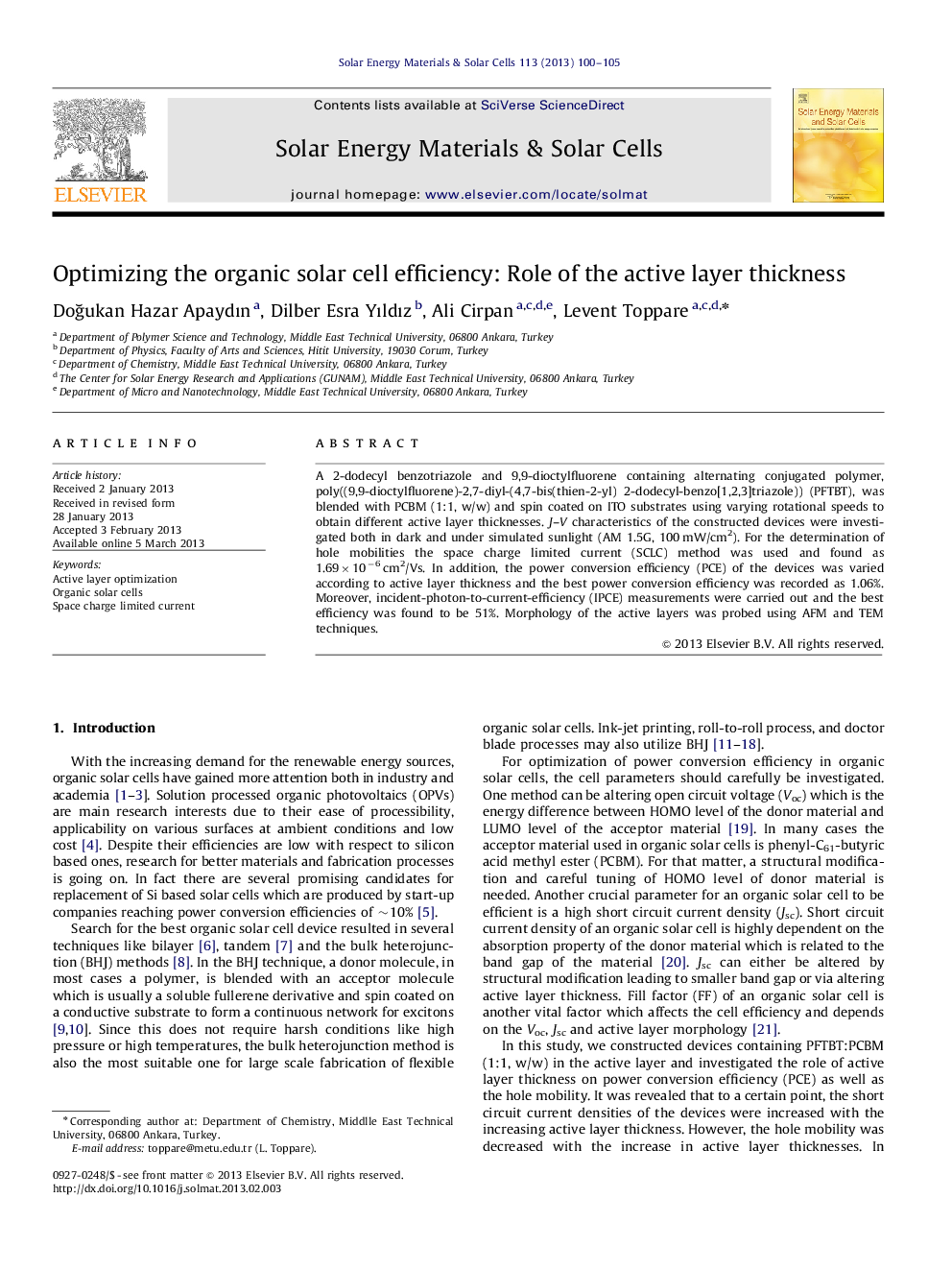| Article ID | Journal | Published Year | Pages | File Type |
|---|---|---|---|---|
| 78269 | Solar Energy Materials and Solar Cells | 2013 | 6 Pages |
A 2-dodecyl benzotriazole and 9,9-dioctylfluorene containing alternating conjugated polymer, poly((9,9-dioctylfluorene)-2,7-diyl-(4,7-bis(thien-2-yl) 2-dodecyl-benzo[1,2,3]triazole)) (PFTBT), was blended with PCBM (1:1, w/w) and spin coated on ITO substrates using varying rotational speeds to obtain different active layer thicknesses. J–V characteristics of the constructed devices were investigated both in dark and under simulated sunlight (AM 1.5G, 100 mW/cm2). For the determination of hole mobilities the space charge limited current (SCLC) method was used and found as 1.69×10−6 cm2/Vs. In addition, the power conversion efficiency (PCE) of the devices was varied according to active layer thickness and the best power conversion efficiency was recorded as 1.06%. Moreover, incident-photon-to-current-efficiency (IPCE) measurements were carried out and the best efficiency was found to be 51%. Morphology of the active layers was probed using AFM and TEM techniques.
► Active layer thickness optimization. ► Efficiency increased from 0.56% to 1.06% according to previous results. ► Morphology studies conducted. ► Highest IPCE efficiency was achieved as 51%. ► The carrier mobility increases with decreasing the PFTBT:PCBM blend thickness.
